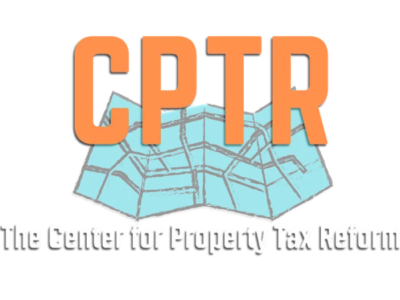More from “Sick City” on the housing affordability crisis. Is short supply or land speculation the problem? See the double take…
Keynote Speaker Profile: Patrick Condon
“It’s not housing that costs too much. It’s land that costs too much.”
Patrick Condon is a Professor of Urban Design at the University of British Columbia
International Making Cities Livable, Suzanne & Lennard Institute for Livable Cities, Inc.
March 31, 2021
Excerpts:
Michael Mehaffy: Patrick, your new book, Sick City, comes at an auspicious time, of course, as we begin to emerge from the pandemic. I’m thinking especially of the affordability crisis, growing displacement and homelessness, and the decline in health and quality of life for a huge sector of the population.
Patrick Condon: As an urbanist I am not interested in just diagnosing a problem; there are many books that do that. What I am most interested in is in understanding the mechanics of inequality, as they play out in the urban landscape, and what we can do as urban designers, planners, and local officials to mitigate these systemic pathologies.
Over recent years I have become more and more frustrated by what I see as huge confusion about a simple sounding problem: why does housing cost so much. I am American born but have spent 30 years in Vancouver, Canada. I have seen housing costs explode from about seven times average wages to the current ratio of 20 to 1. And it’s very obvious there that this is not a problem of constraints on the supply of housing.
Vancouver is famous for promoting downtown living in the style of the high rise “point tower” form. We doubled the residential population of our downtown peninsula from 40,000 to over 80,000 in just fifteen years. Prices went up. We legalized secondary suites in single family districts covering 2/3rd of the city. Prices went up. We legalized rear lane houses city wide. prices went up. We built thousands of new units along our arterials. Prices went up. We legalized the conversion of every single family lot in the city to duplexes, each duplex with a rental unit attached. Prices went up. It’s absolute crazy town price wise, and adding supply doesn’t help.
So I guess a conclusion to be drawn from Vancouver’s failures is that just adding supply — what some have called “build, baby build” — doesn’t work? And yet so many cities still seem to think that’s the simple answer, or maybe it’s the simplistic one. But I take it that what you’re suggesting is that we need to pay more attention to the underlying economics of the land? What are the issues there?
Yes that’s the issue precisely. It’s not housing that costs too much. It’s land that costs too much. The cost of building a square foot of interior space has not risen tremendously in the past 30 years, but the price of land has. Land prices have gone up by a factor of 500 percent in just seven years in many city districts, and tragically that land price increase is hitting lower income districts in major metropolitan areas the hardest! Clearly there is something fundamental going on here, and it’s bigger than gentrification, or so called “foreign investors,” or lack of housing supply. Much bigger.
What is really behind it is a global glut of cash in the hands of investors with not a lot of great places to invest. Stocks are overpriced, bonds don’t deliver returns anymore, and after those two, the only thing really left to invest in is real estate. And by real estate, again, I am not talking about the house, I am talking about the land under it. A house a thousand miles from anywhere is worthless, a house on city land can cost a fortune. It’s obviously the location you buy. “Location, location location”!
And what we’ve learned up here in Vancouver is that it doesn’t help to rezone land for higher density in hopes that the land share of the house price will go down. All that does is boost the price of the land with the land speculator being the only beneficiary.
So I’m sure our conference attendees will want to know, what are the tools and strategies to combat this, that have been shown to be effective?
Well, there is a long term and a short term approach. I will start with the long term one because I really have to say a few things about the underlying economic mechanics of all this, going back all the way to Adam Smith. It was he who first drew attention to the problem of land cost. In talking about landlords he had this to say: “As soon as the land of any country has all become private property, the landlords… love to reap where they have never sowed, and demand a rent even for its natural produce.”
A half century later, David Ricardo, another English economist, put the problem into the form of a law, known to this day as “Ricardo’s Law of Rent” which says, in effect, that virtually all of the productive value of a location will go not to the entrepreneur or the worker but to the landowner as rent. Yet another century went by before the American Henry George fully fleshed out the problem this poses for cities. He said that land rent, or price, will absorb so much of the capital value produced by city entrepreneurs and city wage earners that, in time, virtually all of that capital value gets drained into unproductive land price.
When that happens, it threatens the most vulnerable workers with homelessness, and pushes the entire regional economy, and even national economy, to the point of depression. He titled his most important book Progress and Poverty because the main thesis is that as cities become more and more wealthy, the result is that landowners get amazingly rich, while a larger and larger chunk of city residents live in precarity. Sound familiar?
Anyway, his proposed solution was to eliminate taxes on capital (a factory or apartment building for example) and income (taxes on wages), and to tax land value instead. This would fund all necessary social services and city infrastructure, and unleash the capital creating value of both workers and entrepreneurs. A win-win.
Shorter term, and with an eye towards this problem in the USA, there are, surprisingly, a lot of ways to do this that are practical, both financially and politically. They all have to do with how we use zoning as a tool. [Zoning] helps to “discipline the land market”. The requirement to include affordable housing reduces the potential final financial yield of the project. As such this reduced yield needs to be subtracted from project costs. And the only place to subtract it is in the “residual price” for the land. So inclusionary zoning requirements, properly understood, don’t increase the price of market units — they reduce the price of land.
If you just doubled the density allowance city wide, hoping to increase affordability, without insisting on [affordability], the only thing that would happen would be that land prices would also double (or more). In the end only land speculators would win. The final per square foot rents or purchase price would not drop. Those in need of housing would still be either drained of funds or excluded.
In the context of this conversation, if we wanted to create a more culturally and economically sustainable region, one where commute times and economic, racial, and class segregation issues were no longer getting worse and worse, we would need to deal with the real problem. And the real problem is the out of control world wide inflation in the price of urban land.
A final question for now: how would you sum this up as an action plan for urbanists? What can we do about this?
Well, for a start we can stop falling into the “supplyist” trap. Stop saying that if we just add density, housing will become affordable. It won’t. In my view, we will fail if we don’t recognize that the real problem lies in how urban land price and urban land speculation, under present circumstances, only enriches the rich, and forces the rest into poverty.
Comment:
The dominant view among economists is that the lack of adequate supply is the cause of the housing affordability crisis in North American cities. Condon’s contrarian view is not widely accepted even by community activists who decry the commodification of housing. Why not recognize the role that both speculation and supply play in the cause and solution? Yes, let’s take the position of the ‘abundant housing’ advocates. And let’s also adopt the Georgist view and reform our property tax system by shifting tax rates onto land values. This will put a damper on land speculation and land price inflation. Concurrently shifting tax rates off building value will boost housing production. We can have it both ways – more housing more affordable.
Tom Gihring, Research Director, CGORWA




